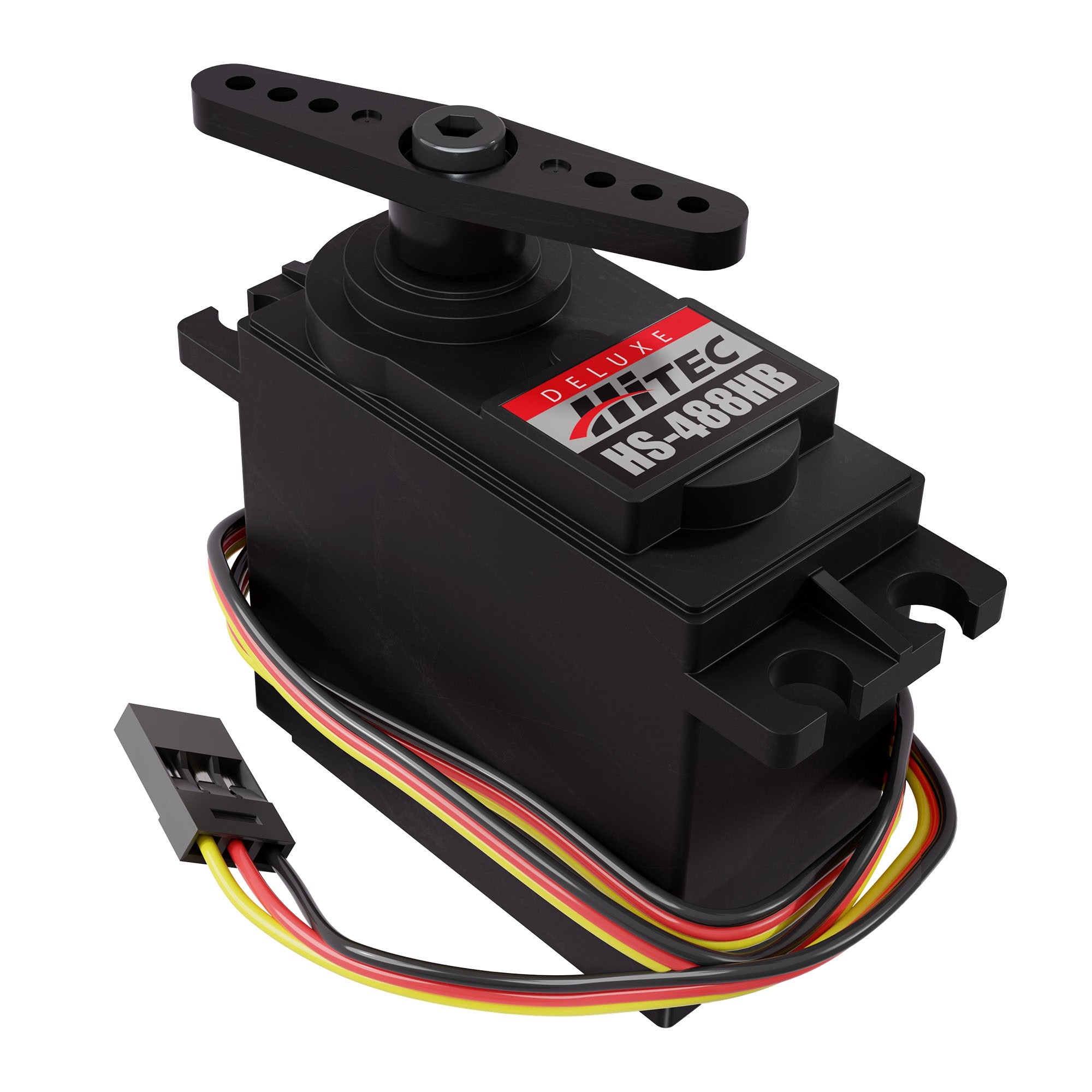Servo Guide¶
A servo combines a small electric motor and control circuit in a single compact package. This allows the servo to rotate to a specified position and hold that position. Typically servos have very limited range of rotation (180° is common).
Servos are NOT replacements for DC motors, and should not be used as such. Servos are made for fine-tuned and accurate movement, not high-load or fast rotation applications.
Servos are commonly used in RC cars (steering) and RC planes (moving ailerons). In FTC, servos are typically used for claws, grabbers, and arms.

A common servo, HS488-HB from Hitec¶
There is a huge variety of servos from different manufacturers, which vary widely in price, performance and value. Fortunately, virtually all servos use the standard 3-wire connector, and accept the same kind of controlling signal (PWM signal at 50 hz). REV Expansion hub provides 6 servo ports, so you can plug in a servo from any manufacturer. Also, virtually all servos use one of common servo sizes, so you can use the same mounts for them. Common general use servos used in FTC are the REV Smart Servo and goBILDA Dual mode Servo (25-2), but you should check out other servos as well. Picking the right servo for your application is a question that’s almost impossible to give a blanket answer for.To learn more, please read the Choosing a servo section below.
Biggest problem with servos is durability: internal servo gears in cheaper servos strip easily when subjected to shock loads. Servos are also very bad at handling lateral loads or bending of the shaft. To avoid having to frequently replace servos, choose ones with metal gears and read the usage suggestion section below.